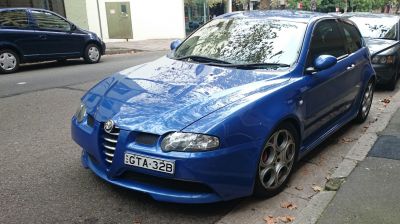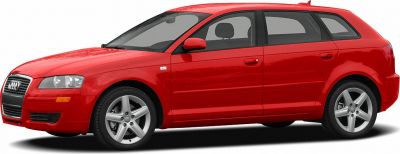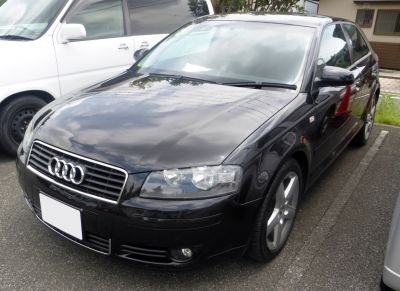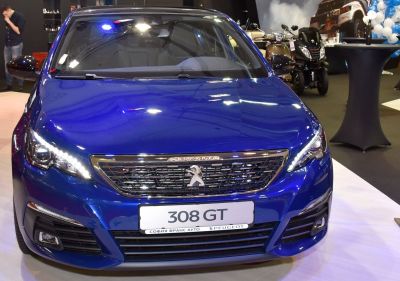 2013 Peugeot 308 II (Phase I, 2013) Dimensions, Size & Specs
2013 Peugeot 308 II (Phase I, 2013) Dimensions, Size & SpecsMeasurements of the 2013 Peugeot 308 II, engineered for optimal performance and comfort
| Dimensions | |
|---|---|
| Length: | 4253 mm167.4 in14.0 ft |
| Width: | 1804 mm71.0 in5.9 ft |
| Width (Folded Mirrors): | 1863 mm73.3 in6.1 ft |
| Width (Opened Mirrors): | 2043-2057 mm80.4-81.0 in6.7-6.7 ft |
| Height: | 1446-1457 mm56.9-57.4 in4.7-4.8 ft |
| Trunk Capacity: | 420-470 liter14.8-16.6 cu ft |
| Trunk Capacity (Max): | 817-855 liter28.9-30.2 cu ft |
| Weight Specifications | |
| Curb Weight: | 1075-1400 kg2370-3086 lbs |
| Maximal permitted Weight: | 1670-1920 kg3682-4233 lbs |
| Tire Specifications | |
| Rims Sizes: |
|
| Tire Sizes: |
|
The Peugeot 308 II (Phase I), produced from 2013 to 2017, is a compact hatchback that balances stylish design with practical dimensions and versatile interior space. Measuring 4253 mm (167.4 inches) in length and a width of 1804 mm (71 inches) without mirrors, it offers a spacious footprint suitable for urban and suburban driving. With the side mirrors folded, the width is 1863 mm (73.3 inches), while the width increases to between 2043 mm and 2057 mm (80.4 - 81 inches) when the mirrors are opened, which should be considered when parking or maneuvering through narrow spaces. The height ranges from 1446 mm to 1457 mm (56.9 - 57.3 inches), giving the vehicle a low profile that enhances aerodynamics and handling.
The curb weight of the 308 II varies between 1075 kg and 1400 kg (2371 - 3086 lbs), depending on the trim and options, while the maximum allowable weight ranges from 1670 kg to 1920 kg (3683 - 4233 lbs). This range makes the model suitable for a balance of performance, fuel economy, and payload capacity. The luggage capacity is generous for a hatchback in its class, offering between 420 and 470 liters (14.8 - 16.6 cubic feet) of space with the rear seats up, expanding significantly to between 817 and 855 liters (28.8 - 30.2 cubic feet) when the rear seats are folded down, providing plenty of room for larger cargo or luggage.
The Peugeot 308 II supports a variety of wheel sizes ranging from 15 to 19 inches, including popular rim sizes of 15, 16, 17, 18, and 19 inches. Tire options are diverse, including sizes such as 195/65 R15, 205/55 R16, 225/45 R17, and 225/40 R18, catering to different driving preferences and trim levels. This hatchback is a well-rounded vehicle choice for those seeking a compact car with a spacious interior, practical luggage capacity, and a range of configurations to suit different needs.
Discover the standout features that make the 2013 Peugeot 308 II a leader in its class
Have a question? Please check our knowledgebase first.
The Peugeot 308 II (Phase I, 2013) measures 4253 mm (approx. 167.4 inches) in length, which places it comfortably within the compact hatchback segment. Its width varies depending on mirror position: 1804 mm (71 inches) with mirrors folded, 2043 to 2057 mm (80.4 to 81 inches) with mirrors open. The compact length allows for easier parking and maneuvering in urban environments, while the width with mirrors folded facilitates navigating narrow streets or tight parking spaces. However, the width with mirrors open should be considered when driving through narrow lanes or tight spaces to avoid scrapes.
The height of the Peugeot 308 II during this generation ranges between 1446 mm and 1457 mm (approximately 56.9 to 57.3 inches). This moderate height ensures ample headroom for both front and rear passengers, contributing to comfort during longer journeys. Additionally, the relatively low height aids aerodynamics, helping improve fuel efficiency and high-speed stability. The design strikes a balance between providing a roomy cabin and maintaining a sleek, sporty profile.
The curb weight of the Peugeot 308 II varies between 1075 kg and 1400 kg (approximately 2370 to 3086 lbs) depending on the specific model, engine, and equipment levels. This relatively low weight contributes positively to handling agility, acceleration responsiveness, and braking performance. A lighter car generally results in better fuel efficiency and reduced wear on components like tires and brakes. Additionally, the maximum permissible weight ranges from 1670 kg to 1920 kg (3684 to 4233 lbs), which includes passengers and cargo capacity.
The Peugeot 308 II offers a luggage capacity of 420 to 470 liters (about 14.8 to 16.6 cubic feet) with the rear seats in place, which is considered spacious for a compact hatchback. When the rear seats are folded, this capacity expands significantly to between 817 and 855 liters (approximately 28.8 to 30.2 cubic feet), allowing for substantial cargo space suitable for larger items or increased storage needs. This versatility and volume compare favorably against competitors in the compact hatchback segment, making the 308 practical for both daily use and longer trips with luggage.
The Peugeot 308 II supports a range of rim sizes: 15, 16, 17, 18, and 19 inches, paired with various tire sizes including 195/65 R15H, 205/55 R16V, 225/45 R17V, 225/40 R18W, and 235/35 R19 91Y, among others. Smaller rims with higher-profile tires, like 15-inch wheels, typically offer a more comfortable ride by absorbing road imperfections better. Larger rims with lower-profile tires, such as 18 or 19 inches, enhance handling precision and cornering stability but may slightly compromise ride softness. Owners can choose rim and tire dimensions based on their preference for comfort versus sportier performance.
Yes, the Peugeot 308 II fits comfortably into a standard garage of 2.4 meters width by 5.5 meters depth. With an overall length of 4253 mm (approximately 4.25 meters or 13.95 feet), it leaves sufficient clearance in a 5.5-meter (18 feet) deep garage for opening the rear hatch and accessing the rear comfortably. The width with mirrors folded is 1804 mm (1.8 meters or about 5.9 feet), well within the 2.4-meter (7.87 feet) garage width. However, with mirrors opened (up to 2057 mm or 2.06 meters), extra care should be taken when opening and closing doors. Overall, parking the 308 II in a standard garage poses no significant spatial issues.
Compared with the first-generation Peugeot 308 (2007–2013), the 308 II (2013–2017) exhibits subtle changes in dimensions that improve interior space and overall practicality. The second generation is slightly longer at 4253 mm compared to approximately 4250 mm in the predecessor, with a notable increase in width to 1804 mm versus about 1760 mm on the older model. The height remains similar, around 1446-1457 mm, contributing to a sportier stance without compromising cabin room. The wider body enhances shoulder room and stability on the road, while the redesigned interior maximizes space usage, improving passenger comfort and luggage capacity.
When compared to other popular compact hatchbacks like the Volkswagen Golf Mk7, Ford Focus Mk3, or Renault Megane of the same era, the Peugeot 308 II holds its own dimensionally. Its length of 4253 mm is slightly shorter than the Golf Mk7 (~4268 mm) and similar to the Focus Mk3 (~4358 mm). The 308 II is wider than many competitors, with 1804 mm (mirrors folded), providing a more spacious cabin feel. Luggage capacity between 420-470 liters is competitive, matching or exceeding some rivals. This combination of a slightly wider frame with typical length and height dimensions gives the Peugeot 308 II an edge in cabin space and comfort within the compact segment.
The curb weight range from 1075 kg to 1400 kg (2370 to 3086 lbs) accounts for the different engine options, trims, and added equipment, influencing fuel economy and acceleration. Lighter variants typically offer more nimble handling and lower fuel consumption, ideal for city driving and efficiency-focused owners. Heavier models, sometimes equipped with additional safety or luxury features, can provide a more stable and refined ride but may reduce fuel efficiency slightly. The maximum permissible weight ranges from 1670 kg to 1920 kg, defining the vehicle's payload capacity including passengers and cargo, which is useful for owners who regularly carry multiple passengers or heavy luggage.
The Peugeot 308 II (Phase I, 2013) generation stood out with its striking modern design, combining sharp lines and a sporty profile. It featured a well-appointed interior with improved ergonomics over its predecessor and a focus on driver experience. Multiple engine options included efficient petrol and diesel variants, catering to a wide market. The 308 II also offered a range of safety technologies and customization options such as various rim sizes from 15 to 19 inches. Practicality was enhanced by a sizeable luggage capacity and comfortable seating. This generation helped the 308 consolidate its reputation as a stylish, versatile, and efficient compact hatchback.
Discover similar sized cars.

| Production: | 2003-2006 |
|---|---|
| Model Year: | 2004 |
| Length: | 4213 mm165.9 in |
| Width: | 1764 mm69.4 in |
| Height: | 1412 mm55.6 in |

| Production: | 2011-2013 |
|---|---|
| Model Year: | 2011 |
| Length: | 4250 mm167.3 in |
| Width: | 1790 mm70.5 in |
| Height: | 1450 mm57.1 in |

| Production: | 1999-2001 |
|---|---|
| Model Year: | 1999 |
| Length: | 4187 mm164.8 in |
| Width: | 1740 mm68.5 in |
| Height: | 1410 mm55.5 in |

| Production: | 2005-2008 |
|---|---|
| Model Year: | 2006 |
| Length: | 4214 mm165.9 in |
| Width: | 1765 mm69.5 in |
| Height: | 1421 mm55.9 in |

| Production: | 2003-2005 |
|---|---|
| Model Year: | 2004 |
| Length: | 4203-4214 mm165.5-165.9 in |
| Width: | 1765 mm69.5 in |
| Height: | 1421 mm55.9 in |

| Production: | 2006-2008 |
|---|---|
| Model Year: | 2007 |
| Length: | 4214 mm165.9 in |
| Width: | 1765 mm69.5 in |
| Height: | 1399 mm55.1 in |

| Production: | 2017-2021 |
|---|---|
| Model Year: | 2017 |
| Length: | 4253 mm167.4 in |
| Width: | 2043 mm80.4 in |
| Height: | 1446-1457 mm56.9-57.4 in |

| Production: | 1995-2002 |
|---|---|
| Model Year: | 1995 |
| Length: | 4020-4187 mm158.3-164.8 in |
| Width: | 1741-1750 mm68.5-68.9 in |
| Height: | 1410-1420 mm55.5-55.9 in |
